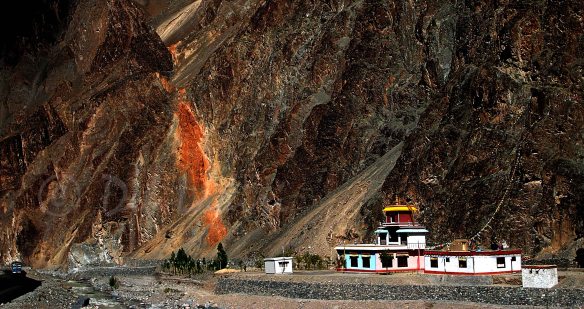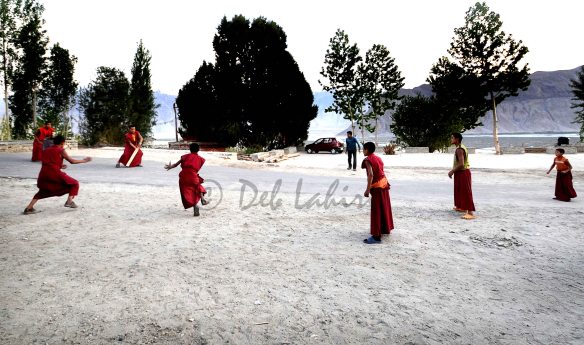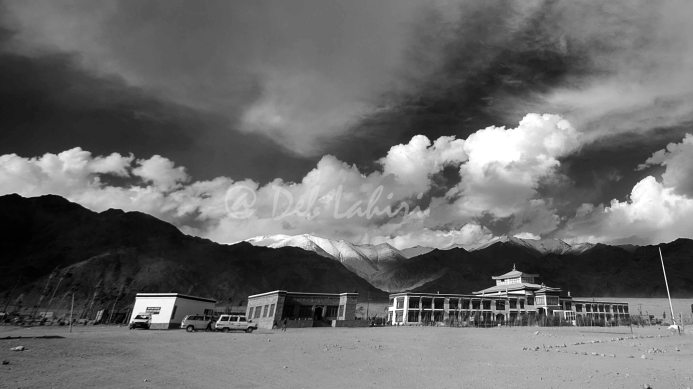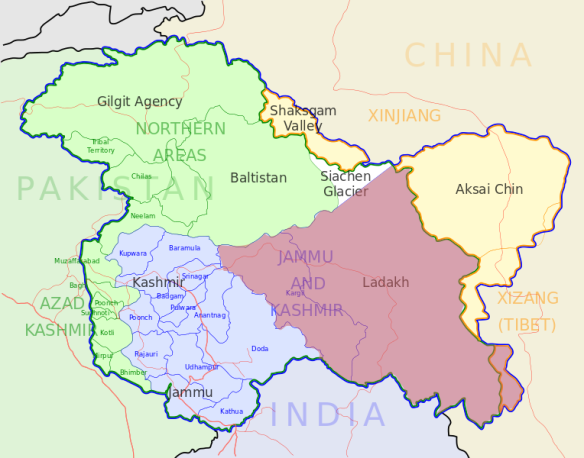The Buddhist Monasteries of Ladakh is predominantly different in shape-size-culture-custom from the other Buddhist study centres of the world. Mostly these monasteries are isolated from the world on the top of the hill in a beautiful serene place amidst Mother Nature. One has to climb up the hill a little to get into these monasteries, made of bricks, stones and woods. The main house for prayer and the resting place for the Lamas (Monks) – mostly the monasteries are constructed along these lines. The inner apartments of the monasteries are in some way mystery-clad. The main entrances of the monasteries are generally low in height so that one has to bow down his head before the almighty while entering.
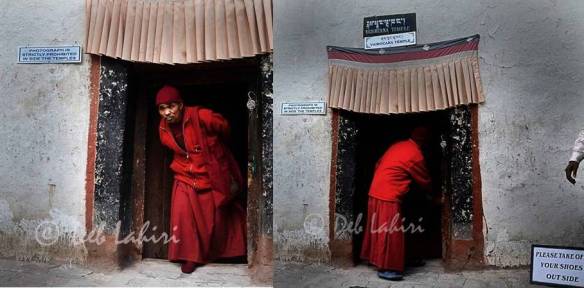
The main entrances of the monasteries are generally low in height so that one has to bow down his head before the almighty while entering.
Once you enter the premises you are struck with the mysterious environment in the semi darkness. Nothing is apparently visible as it should be. On top of this, there has been a strong smell of resin, paraffin or something of that sort. Once your eyes get accustomed with the thin ray of light trespassing from the skylight, you would see all the walls are covered by the strange and vibrant images of god and goddess. Most of these images are made of mural. In the closet made of semi transparent glasses, there exist candle-dolls, crafted by Lamas, utensils, bells, old and faded manuscripts worn to shreds. In the front, on a tall platform Gyani Buddha (Maitraya) conspicuously exists. In Ladakhi language the “Maitrayea” image of lord Buddha is called Chamba. Most of the times, chanting of mantras by the Lamas or the beats of deep-toned musical instruments are heard from the interior apartments of the monasteries. Interior apartments are called Dokhang.
These are basically prayer halls of a monastery. Generally, in all the monasteries there exist another room adjacent to Dokhang – In this room they usually keep the idols of death’s god and strange masks that will surely make one terrified. At the time of mask- festival, the Lamas wear these staff while performing mask-dance. Outside there are Chortens in rows (temple shaped construction made of brick) and series of prayer wheels. Lamas from eight to eighty with their simple and innocent faces, always roam around in various corners of the monasteries.
If you are interested and want to know more please write your comments in the reply section.

